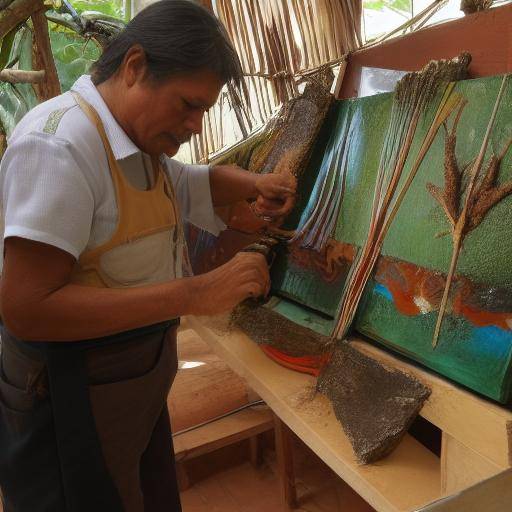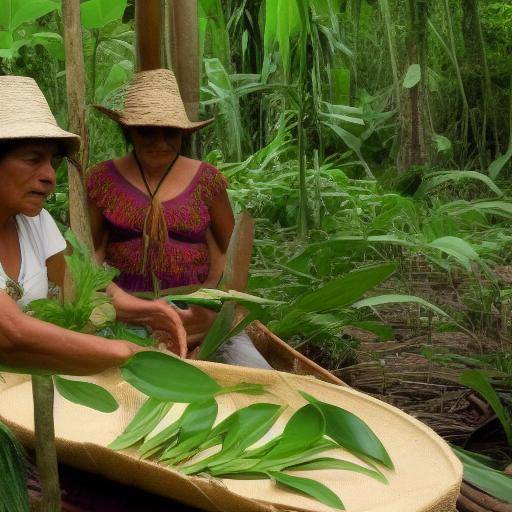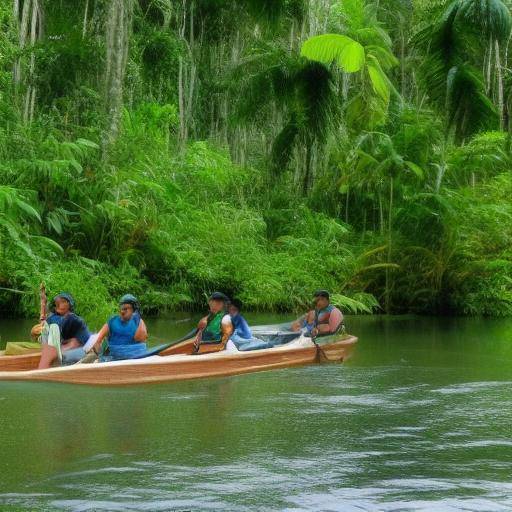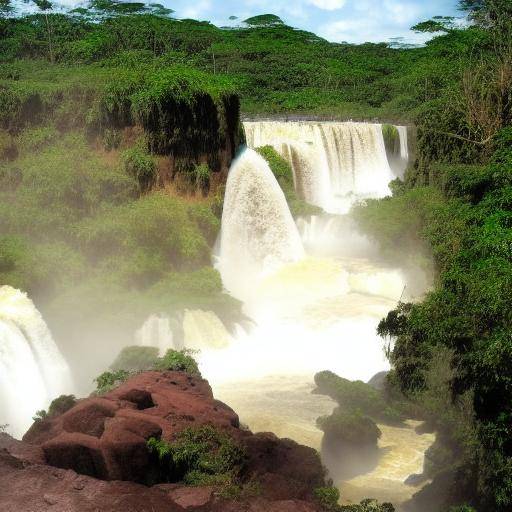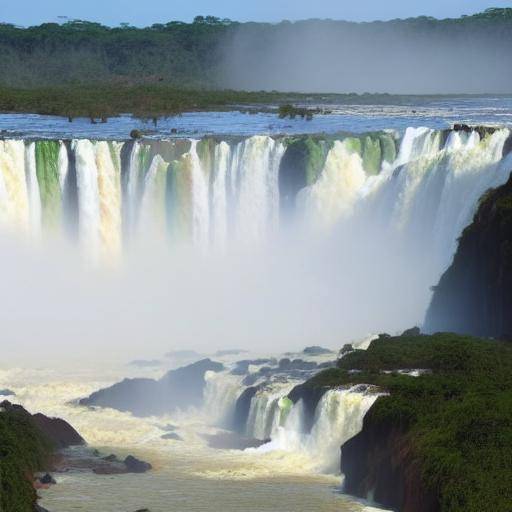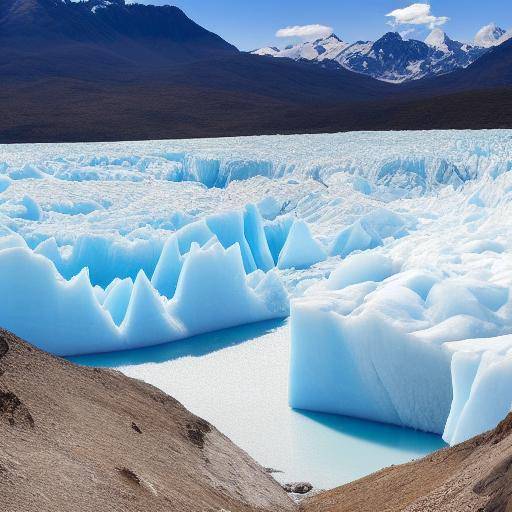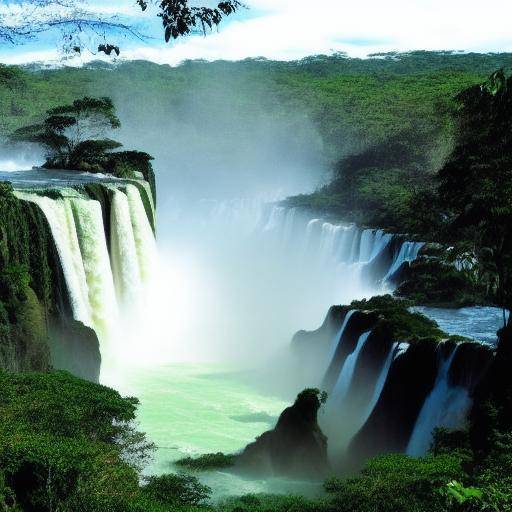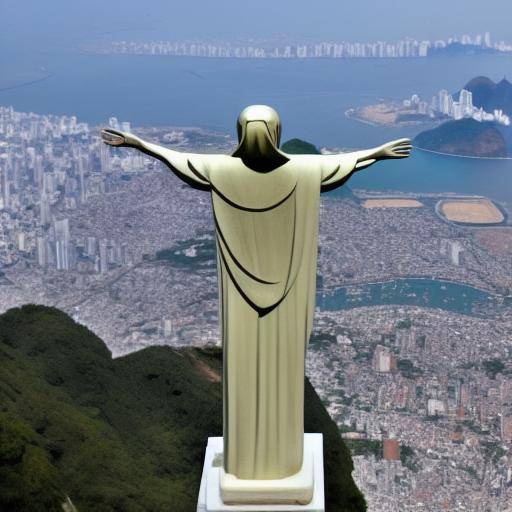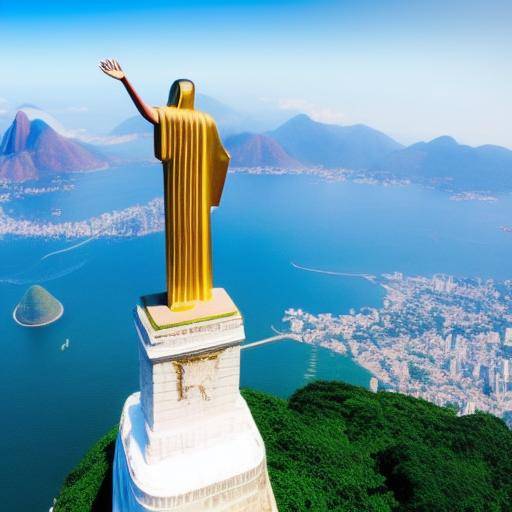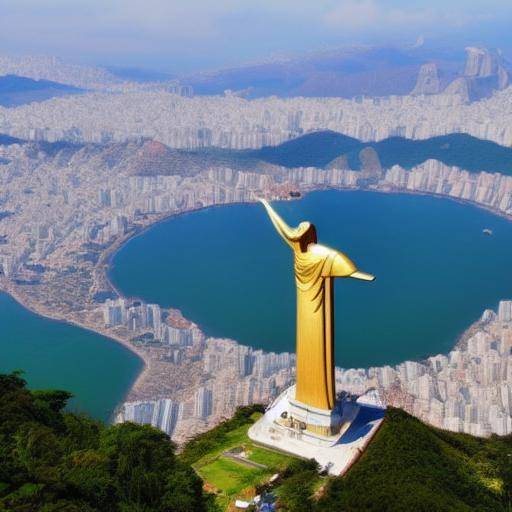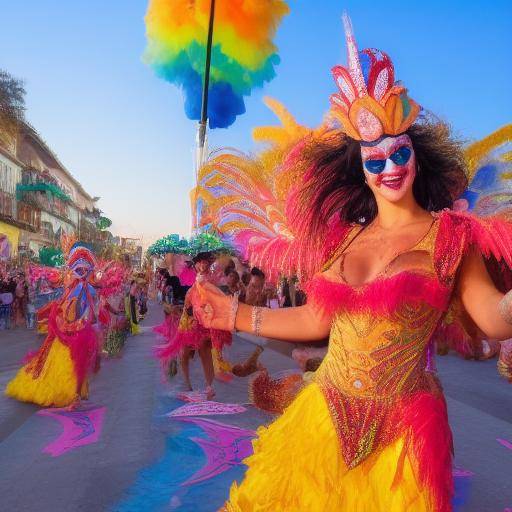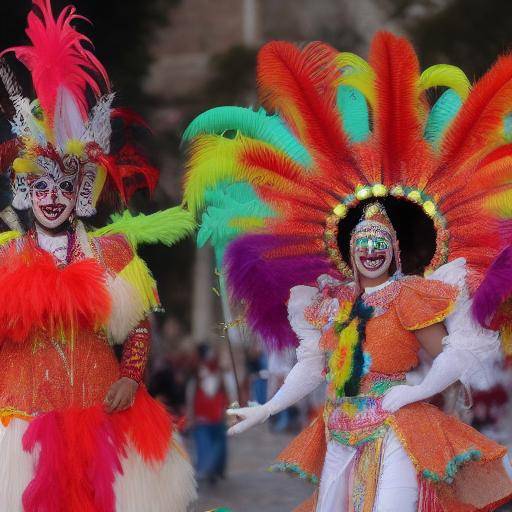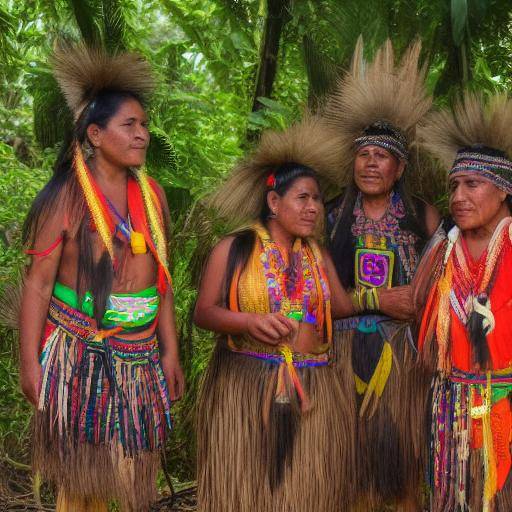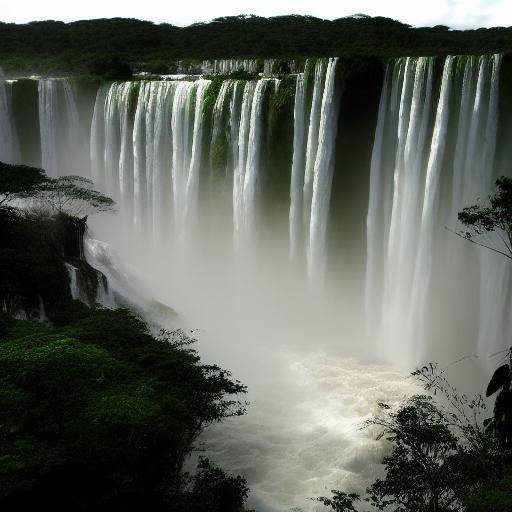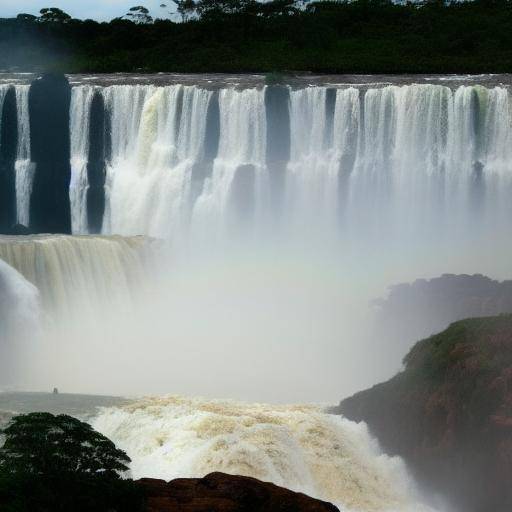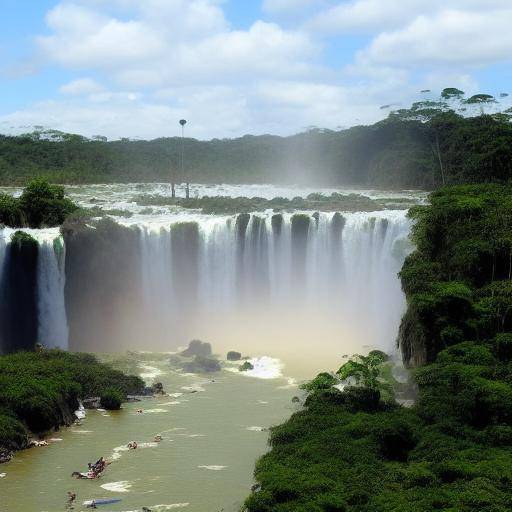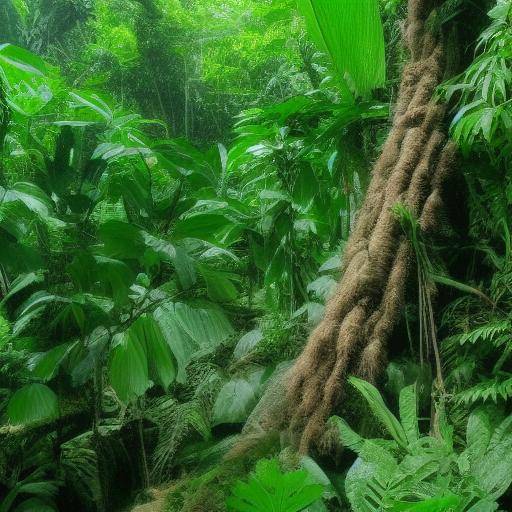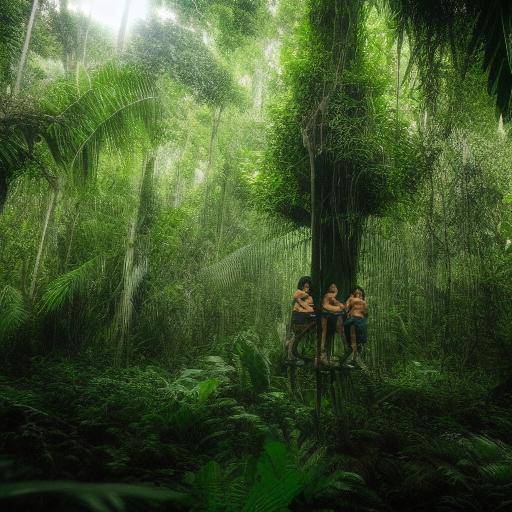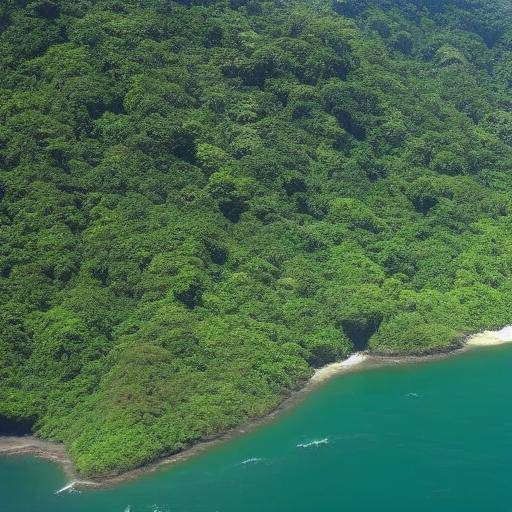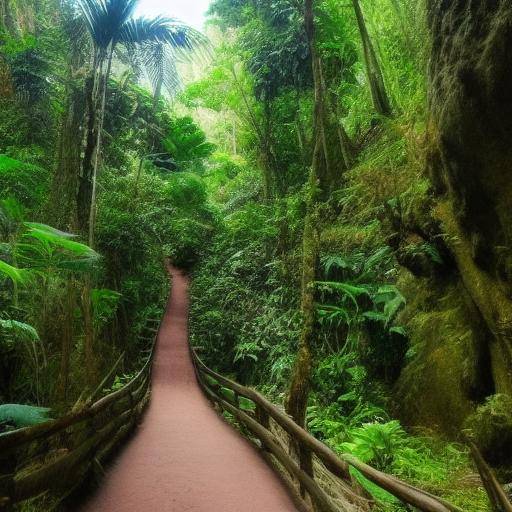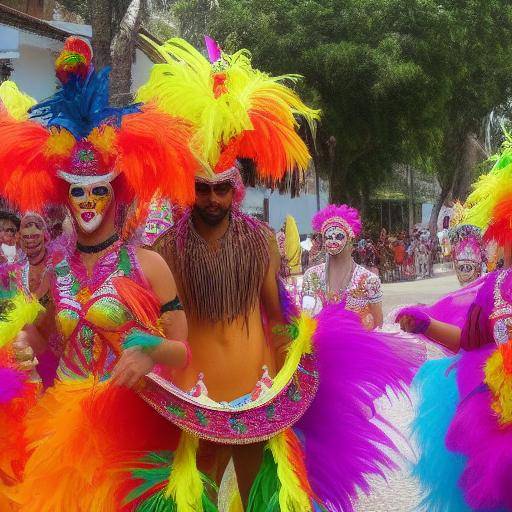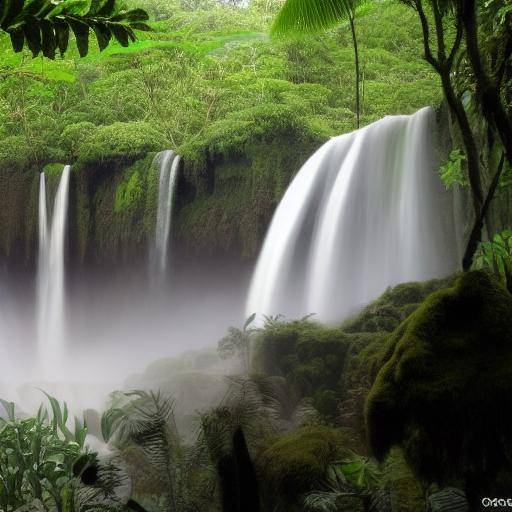
Introduction
Iguazú Falls, located on the border of Argentina and Brazil, are an impressive natural spectacle that attracts visitors from all over the world. This wonder of nature not only offers impressive aquatic landscapes, but also a lush diversity of flora and fauna that inhabits its surroundings. In this article, we will explore the rich biodiversity surrounding Iguazú Falls, including emblematic species, unique ecosystems and the importance of preserving this natural treasure. We will discover the natural beauty and wildlife that make this region an incomparable destination for nature lovers. Get ready to immerse yourself in a world of unique colors, sounds and sensations!
Flora and Fauna in The Surrounds of the Iguazú Falls
Exceptional Biodiversity
Iguazú Falls are not only a paradise for lovers of adventure and scenic beauty, but also a sanctuary for biodiversity. Within this very special and humid ecosystem, there is a lot of plant and animal species that cohabit in harmony. From huge exotic ferns and orchids to multicolored butterflies and tropical birds, the variety of species is amazing. Numerous mammals, amphibians, reptiles and insects also call this forest their home, contributing to the natural wealth of the region and forming part of a complex ecological balance.
Flower: Beauty in Every Skin
The flora surrounding the Iguazú Falls is lush and exotic. The subtropical jungle houses a diversity of plants and trees that surprises its beauty and vitality. The vegetation includes species such as the ceibo, the national tree of Argentina known for its bright red flowers, as well as the pine palm tree, which forms characteristic forests in the region. The thick foliage of the trees is the home of vines and lianas that create true natural wonders.
Wildlife in Action
The fauna that lives in the surroundings of the Iguazú Falls is equally impressive. From majestic jaguars and picturesque coatis to colorful morpho butterflies and tucanes, each encounter with wildlife is an unforgettable experience. The sounds of the jungle, the footprints of the animals in the mud and the birds that come out of the sky create a perfect setting to admire and respect wildlife in its purest state.
Conservation and Protection of Natural Environment
The preservation of the flora and fauna of the surroundings of the Iguazú Falls is essential to maintain the ecological balance and the natural beauty of the region. Various conservation initiatives and protection programs have been implemented to safeguard this invaluable natural heritage. The conservation commitment is a joint task between governments, environmental organizations, local communities and visitors, all contributing to the preservation of this fragile ecosystem.
Discovering Biodiversity Through Ecotourism
Ecotourism is a sustainable way to enjoy and appreciate the biodiversity of the surroundings of the Iguazú Falls. Visitors have the opportunity to explore natural paths, sighting birds, participate in photographic safari and learn about the importance of conservation through educational activities. The specialized guides provide knowledge and awareness of the delicacy of this ecosystem, fostering responsible tourism that promotes the protection of local flora and fauna.
Conclusions
The wealth of flora and fauna in the surroundings of the Iguazú Falls is a testimony to the power of nature, as well as a call to action to protect and preserve these natural treasures for future generations. With its exceptional biodiversity, the region of Iguazú Falls offers an incomparable experience for nature lovers, providing the opportunity to immerse in a world of colors, sounds and wildlife.
Frequently asked questions
1. What is unique about the flora and fauna surrounding the Iguazú Falls?
The flora and fauna of the surroundings of the Iguazú Falls is unique due to its rich diversity, where species of the subtropical jungle and the water ecosystem of the jumps converge. This unique combination creates an enabling environment for a wide range of species that are not found elsewhere on the planet.
2. What are some emblematic species of the region?
Among the emblematic species of the region are the jaguar, the coati, the harpy eagle, the tucán, as well as a variety of orchids, ferns and trees such as the ceibo and the pine palm tree.
3. How is the region's biodiversity preserved?
Conservation is carried out through programmes of protection, environmental education, scientific research, and the promotion of sustainable ecotourism. These initiatives seek to safeguard ecological balance and promote the protection of endangered species.
4. What ecotourism activities can be done in the region?
Visitors can participate in guided tours, bird watching, natural trail hikes, photographic safaris and educational activities that promote knowledge and awareness of the importance of conservation.
5. What is the role of the local community in the conservation of flora and fauna?
The local community plays a key role in the conservation of flora and fauna, as its active participation in protection, environmental education and sustainable activities contributes directly to the preservation of the natural environment.
6. How can visitors contribute to the protection of the natural environment?
Visitors can contribute to the protection of the natural environment by supporting responsible tourist practices, respect for environmental regulations, and participation in volunteer programmes or donations for biodiversity conservation.
With the combination of its amazing flora and fauna, Iguazú Falls offer a natural wealth and an unforgettable experience for nature lovers. The preservation of this unique biodiversity is essential to maintain the ecological balance and natural beauty of the region, so it is everyone's responsibility to contribute to its protection and conservation.
Conclusion
In short, the surroundings of the Iguazú Falls are a natural treasure that hosts exceptional biodiversity, offering an incomparable setting for wildlife and a unique opportunity to preserve and appreciate the richness of our planet. From the lush flora to the amazing fauna, this ecosystem reminds us of the importance of preserving and protecting our natural environment. By visiting this magnificent place, each person contributes to the preservation of this wonder of nature, promoting responsible and conscious tourism.
Join us in the wonderful adventure of discovering and preserving the flora and fauna of the surroundings of the Iguazú Falls, a journey that allows us to connect with the amazing biodiversity of our planet and discover the beauty and fragility of wildlife. Together, we can take care of and protect this natural jewel for generations to come, ensuring that the magic of the Iguazú Falls lasts forever.
Flora and fauna in the surroundings of the Iguazú Falls
Introduction
Iguazú Falls, located on the border of Argentina and Brazil, are an impressive natural spectacle that attracts visitors from all over the world. This wonder of nature not only offers impressive aquatic landscapes, but also a lush diversity of flora and fauna that inhabits its surroundings. In this article, we will explore the rich biodiversity surrounding Iguazú Falls, including emblematic species, unique ecosystems and the importance of preserving this natural treasure. We will discover the natural beauty and wildlife that make this region an incomparable destination for nature lovers. Get ready to immerse yourself in a world of unique colors, sounds and sensations!
Flora and Fauna in The Surrounds of the Iguazú Falls
Exceptional Biodiversity
Iguazú Falls are not only a paradise for lovers of adventure and scenic beauty, but also a sanctuary for biodiversity. Within this very special and humid ecosystem, there is a lot of plant and animal species that cohabit in harmony. From huge exotic ferns and orchids to multicolored butterflies and tropical birds, the variety of species is amazing. Numerous mammals, amphibians, reptiles and insects also call this forest their home, contributing to the natural wealth of the region and forming part of a complex ecological balance.
Flower: Beauty in Every Skin
The flora surrounding the Iguazú Falls is lush and exotic. The subtropical jungle houses a diversity of plants and trees that surprises its beauty and vitality. The vegetation includes species such as the ceibo, the national tree of Argentina known for its bright red flowers, as well as the pine palm tree, which forms characteristic forests in the region. The thick foliage of the trees is the home of vines and lianas that create true natural wonders.
Wildlife in Action
The fauna that lives in the surroundings of the Iguazú Falls is equally impressive. From majestic jaguars and picturesque coatis to colorful morpho butterflies and tucanes, each encounter with wildlife is an unforgettable experience. The sounds of the jungle, the footprints of the animals in the mud and the birds that come out of the sky create a perfect setting to admire and respect wildlife in its purest state.
Conservation and Protection of Natural Environment
The preservation of the flora and fauna of the surroundings of the Iguazú Falls is essential to maintain the ecological balance and the natural beauty of the region. Various conservation initiatives and protection programs have been implemented to safeguard this invaluable natural heritage. The conservation commitment is a joint task between governments, environmental organizations, local communities and visitors, all contributing to the preservation of this fragile ecosystem.
Discovering Biodiversity Through Ecotourism
Ecotourism is a sustainable way to enjoy and appreciate the biodiversity of the surroundings of the Iguazú Falls. Visitors have the opportunity to explore natural paths, sighting birds, participate in photographic safari and learn about the importance of conservation through educational activities. The specialized guides provide knowledge and awareness of the delicacy of this ecosystem, fostering responsible tourism that promotes the protection of local flora and fauna.
Conclusions
The richness of flora and fauna in the alredrededores of the Iguazú Falls is a testimony of the power of nature, as well as a call to action to protect and preserve these natural treasures for future generations. With its exceptional biodiversity, the region of Iguazú Falls offers an incomparable experience for nature lovers, providing the opportunity to immerse in a world of colors, sounds and wildlife.
Frequently asked questions
What is unique about the flora and fauna surrounding the Iguazú Falls?
The flora and fauna of the surroundings of the Iguazú Falls is unique due to its rich diversity, where species of the subtropical jungle and the water ecosystem of the jumps converge. This unique combination creates an enabling environment for a wide range of species that are not found elsewhere on the planet.
What are some emblematic species of the region?
Among the emblematic species of the region are the jaguar, the coati, the harpy eagle, the tucán, as well as a variety of orchids, ferns and trees such as the ceibo and the pine palm tree.
How is the region's biodiversity preserved?
Conservation is carried out through programmes of protection, environmental education, scientific research, and the promotion of sustainable ecotourism. These initiatives seek to safeguard ecological balance and promote the protection of endangered species.
What ecotourism activities can be done in the region?
Visitors can participate in guided tours, bird watching, natural trail hikes, photographic safaris and educational activities that promote knowledge and awareness of the importance of conservation.
What is the role of the local community in the conservation of flora and fauna?
The local community plays a key role in the conservation of flora and fauna, as its active participation in protection, environmental education and sustainable activities contributes directly to the preservation of the natural environment.
How can visitors contribute to the protection of the natural environment?
Visitors can contribute to the protection of the natural environment by supporting responsible tourist practices, respect for environmental regulations, and participation in volunteer programmes or donations for biodiversity conservation.
With the combination of its amazing flora and fauna, Iguazú Falls offer a natural wealth and an unforgettable experience for nature lovers. The preservation of this unique biodiversity is essential to maintain the ecological balance and natural beauty of the region, so it is everyone's responsibility to contribute to its protection and conservation.
Conclusion
In short, the surroundings of the Iguazú Falls are a natural treasure that hosts exceptional biodiversity, offering an incomparable setting for wildlife and a unique opportunity to preserve and appreciate the richness of our planet. From the lush flora to the amazing fauna, this ecosystem reminds us of the importance of preserving and protecting our natural environment. By visiting this magnificent place, each person contributes to the preservation of this wonder of nature, promoting responsible and conscious tourism.
Join us in the wonderful adventure of discovering and preserving the flora and fauna of the surroundings of the Iguazú Falls, a journey that allows us to connect with the amazing biodiversity of our planet and discover the beauty and fragility of wildlife. Together, we can take care of and protect this natural jewel for generations to come, ensuring that the magic of the Iguazú Falls lasts forever.

